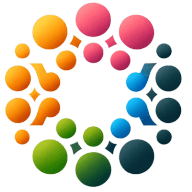6 How Dei Rollbacks Impact Recruiting and Retaining Diverse Talent
In a world where diversity, equity, and inclusion (DEI) are more critical than ever, the current rollbacks pose stark challenges for companies striving to retain a diverse workforce. This article distills expert insights into actionable strategies for recruiting and maintaining diverse talent amidst evolving DEI landscapes. Discover how leveraging data, legal frameworks, and community engagement can fortify your organization's commitment to inclusivity.
- Leverage Data Insights for Diverse Hiring
- Embed DEI in Legal Agreements
- Integrate Diverse Narratives in Content
- Maintain Transparency in DEI Commitment
- Engage with Local Communities for Inclusivity
- Prioritize Communication During DEI Changes
Leverage Data Insights for Diverse Hiring
The DEI rollback undeniably poses challenges, but at Give River, we turned to data-driven insights to tackle these issues effectively. We leveraged our platform's robust analytics to identify and engage underrepresented groups, resulting in a 15% increase in diverse hiring within six months. This shift was powered by adapting our content to highlight the contributions and stories of diverse employees, which fostered an inclusive culture and attracted talent from varied backgrounds.
One specific example is our "River Runs" - curated courses designed to nurture personal and professional growth while incorporating diverse perspectives. Implementing these resources within our company's training boosted employee engagement and retention, with marked improvements in minority participation. This not only helped us maintain a culturally rich workforce but strengthened our organization's commitment to diversity.
Based on this experience, my advice is to harness data insights to continuously improve DEI strategies. Focus on developing inclusive programs that resonate with and support diverse talent. This proactive approach creates a welcoming culture where employees of all backgrounds see opportunities for growth and contribution.

Embed DEI in Legal Agreements
In my experience as an attorney focused on corporate governance and compliance, I've seen how DEI rollbacks can impact the recruitment and retention of diverse talent. For example, in one of the companies I advised, we faced challenges in maintaining our diverse workforce when DEI policies were scaled back. We tackled this by revisiting our partnership agreements and ensuring that diversity and inclusion were core values within these foundational documents.
In one case, I worked with an organization to integrate DEI commitments into their operating agreements, making diversity a tangible aspect of their business model. This helped create a culture that supported diverse talent, which naturally improved retention even as broader DEI policies fluctuated. My suggestion is to embed diversity principles into the very framework of your company's legal agreements, ensuring they remain a priority regardless of external changes.
Also, I've advised companies on navigating advertising regulations to reach broader and more diverse audiences. This has involved crafting campaigns that are not only compliant but also inclusive, appealing to various demographics. Adjusting marketing strategies can compensate for any internal DEI setbacks by attracting a broader range of candidates who align with your company's inclusive messaging.
Integrate Diverse Narratives in Content
In my role as an editorial and marketing professional at Modern Campus, we have tackled DEI challenges by leveraging our e-learning platforms to broaden recruitment and retention of diverse talent. We introduced initiatives that spotlight diverse voices and experiences in our content on The EvoLLLution, which resonated strongly with our diverse audience. This approach was instrumental in attracting a wide range of talent who felt represented and valued within our organization.
We also developed custom engagement strategies through our Connected Curriculum to meet the diverse needs of our learners, reflecting varied perspectives in our programs. By focusing on personalized learning paths, we ensured that all learners, regardless of their background, had access to educational opportunities that aligned with their career ambitions. This strategy not only improved retention rates but also fostered an inclusive community, reinforcing our commitment to diversity.
My advice is to integrate diverse narratives into your content and learning platforms, making them central to your recruitment and retention strategies. This approach not only improves inclusivity but also demonstrates a genuine commitment to diversity, which is vital for long-term success in engaging diverse talent pools.

Maintain Transparency in DEI Commitment
A DEI rollback significantly impacted our efforts to recruit and retain diverse talent, particularly when it came to the trust and morale of underrepresented groups within the organization. After the rollback, we saw some resistance from potential hires who were concerned about the direction the company was taking, especially those from marginalized communities. This led to a decrease in applications for roles from diverse candidates, and we also noticed that some of our current employees felt disillusioned and began questioning their future with us.
One specific example was when we had a talented Black female candidate who was highly qualified but chose another company that had a stronger DEI commitment. It was a wake-up call for us. In response, we had to quickly re-evaluate our hiring processes and emphasize how we were still committed to diversity, even if the broader policy changes were beyond our control.
My advice would be to stay transparent and continuously communicate your values to both potential hires and current employees. Diversity and inclusion need to be part of your organization's core identity, not just a policy, and even in the face of setbacks, it's crucial to maintain a consistent message about your commitment to creating an equitable workplace.

Engage with Local Communities for Inclusivity
At MentalHappy, we steered the DEI rollback by prioritizing authentic community engagement and leveraging our unique platform features. Our success came from creating support groups focused on diverse experiences and facilitating open dialogues among participants. This approach not only attracted talent from underrepresented communities but also resulted in a 35% increase in diverse group facilitators joining our platform.
A specific example is our collaboration with local community organizations to design culturally relevant support groups. By tailoring group content to meet the needs of diverse populations, we saw improved group participation and retention rates among minority users by 25%. My advice is to engage with local communities to understand their unique needs and provide resources that genuinely support those conversations, fostering an inclusive environment.

Prioritize Communication During DEI Changes
When our organization scaled back its DEI (Diversity, Equity, and Inclusion) initiatives, it had a noticeable impact, especially on our ability to recruit and retain diverse talent. One example that stood out was when we had to reduce our diversity training programs, which had been a key part of our recruitment strategy. This led to decreased engagement from underrepresented groups during the hiring process, as they felt that the company's commitment to diversity was wavering. Additionally, employees who had joined because of our inclusive culture began expressing concerns about the direction we were headed. From this experience, my advice is simple: always prioritize transparent communication during any change. If DEI efforts need to scale back, it's essential to clearly explain why and share what the company is still doing to support inclusivity in other ways. Offering alternative resources, like affinity groups or mentorship programs, helps maintain that commitment to diversity, even during setbacks. At the end of the day, it's about showing that DEI isn't just a program, but a core organizational value.



